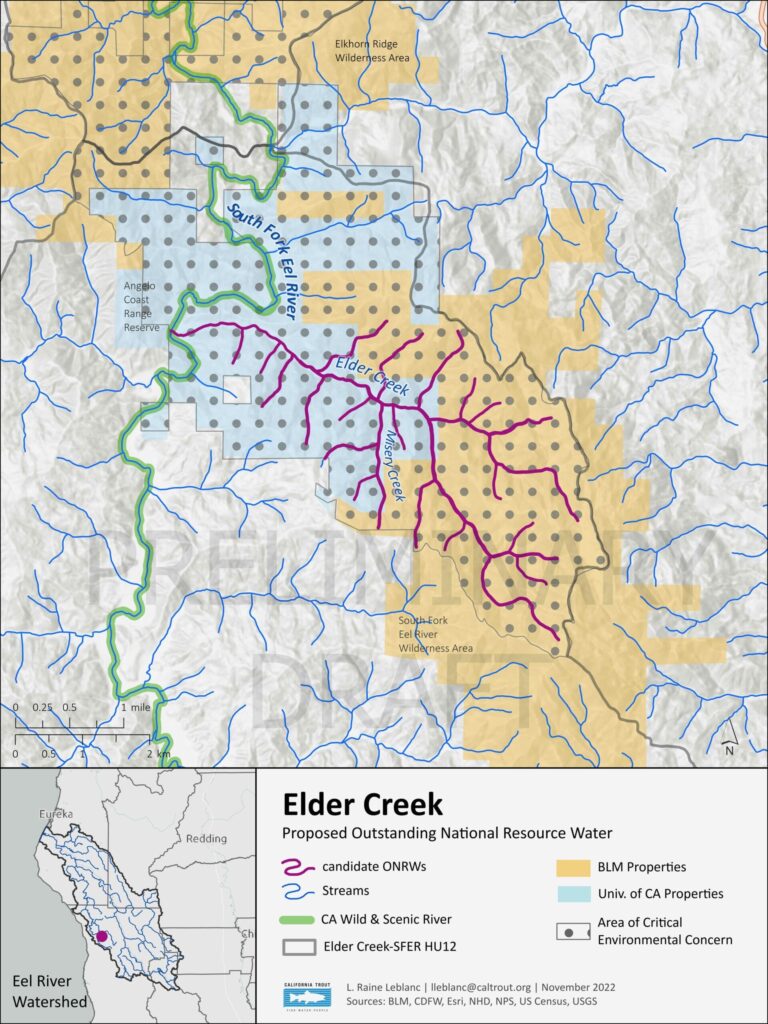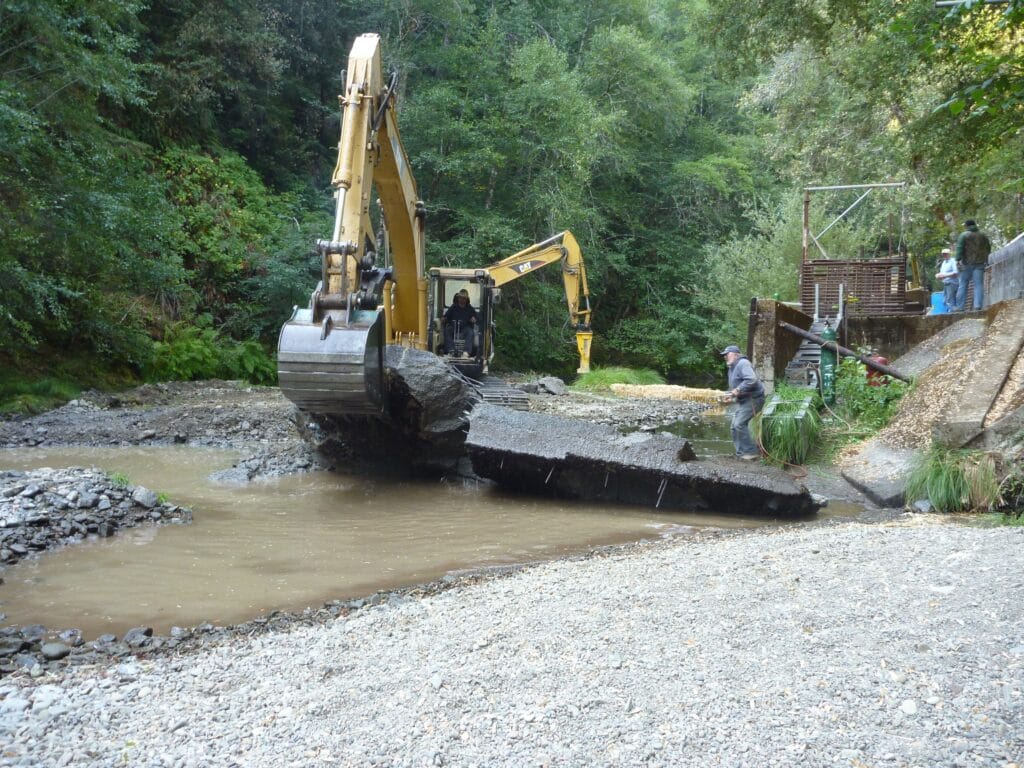
Strengthening protections for Eel River tributaries to help recover native steelhead and salmon
California’s Eel River got its modern name from the swarms of Pacific lamprey that once plowed up and down its length, but it’s more famous for its wild steelhead and salmon – and, unfortunately, for the dramatic decline in those fisheries over the past century.
Trout Unlimited has been working over the past 25 years to improve habitat and fish passage for steelhead and salmon in the Eel watershed, much of which remains largely intact. Two recent developments in which TU has played a major role should dramatically improve the prospects for wild salmon and steelhead in California’s third largest river system.

Above: Cedar Creek, a tributary of the Eel River.
The first is that Pacific Gas & Electric, the utility that owns two old hydropower dams on the river, has agreed to remove them. TU’s California director, Matt Clifford, and senior water policy advisor, Brian Johnson, helped negotiate this agreement.
The second is that the North Coast Regional Water Quality Control Board recently approved a proposal to designate two important tributaries to the Eel’s south fork as Outstanding National Resource Waters (ONRW). Cedar Creek and Elder Creek are the two tributaries proposed by TU and our partners in this effort: Pew, The Nature Conservancy and California Trout.

Image: California Department of Water Resources.
About ONRWs
Outstanding National Resource Waters (Outstanding Waters) are rivers, streams, wetlands and lakes characterized by exceptional water quality and that qualify for permanent protection in that condition under the Clean Water Act.
Outstanding Waters are also designated because they support other values dependent on water quality, such as unique recreational opportunities, significant cultural values and high ecological productivity.

The ONRW designation is distinct from other protective designations in that it is specifically focused on water quality. No permanent degradation of these waters’ quality is allowed, although some temporary degradation may be permitted for short-term activities such as emergency measures and habitat restoration.
An ONRW designation does not affect existing activities such as farming, ranching, fishing or boating, provided such uses do not degrade water quality.
Hope for Eel River salmon and steelhead
The state of the Eel’s once-prolific salmonid runs reflects the usual lethal combo platter of factors. Dams. Diversions. Pollution. The legacy of former land use practices. More recently, extreme and prolonged drought –– a characteristic of California’s Mediterranean climate that is being intensified by the warming planet. All have joined forces to harm the Eel River.
Despite these tribulations, the Eel remains a focus for salmon and steelhead recovery on the West Coast. That’s in part because this river’s spring-fed headwaters reliably provide cold, clean water, even during the dry season –– perfect conditions for spawning and rearing salmonids.
Our petition for Outstanding Waters designation for Elder Creek and Cedar Creek was crafted over two years and submitted last year to the regional water board. After numerous discussions, our petition was endorsed by the staff and approved on June 14 by the water board as a project in the formal update to the three-year work plan for protecting water quality in the North Coast region.

Elder and Cedar Creeks provide vital flows and habitat
Elder Creek flows through the one of the largest tracts of undeveloped coastal conifer forest remaining in California. It was designated a National Natural Landmark in 1964 and flows from its sources in the South Fork Eel Wilderness through federal public lands managed by the Bureau of Land Management (BLM) and state lands managed for scientific research by the University of California.

BLM has identified Elder Creek as eligible for designation as a National Wild and Scenic River due to its outstanding scenery, ecology and scientific research values. The proposed Outstanding Waters designation applies to Elder Creek and its tributaries and wetlands on public lands.
Spring-fed Cedar Creek provides critical coldwater recharge for the South Fork Eel Wild & Scenic River. Cedar Creek’s sources flow from the South Fork Eel Wilderness and from state lands in the Little Red Mountain Ecological Reserve managed by the California Department of Fish and Wildlife (CDFW).
Cedar Creek and its tributaries on federal lands were also determined eligible for National Wild & Scenic River designation by the BLM, for their outstanding scenic, aquatic life, geological and ecological values. The proposed ONRW designation applies to Cedar Creek, North Fork Cedar Creek, Little Cedar Creek and other tributaries and wetlands on public lands.

TU’s work pays off for all
So much of the work that TU does today is on the restoration side of our mission, that is, trying to repair and heal already-damaged habitat and salmonid populations. In waters like Cedar and Elder Creeks, which continue to provide exceptional water quality and year-round flows, we have an opportunity to save habitat that’s still healthy and productive.

As the warming climate rapidly diminishes flows and elevates water temperatures in many watersheds, it is vital that we strengthen protections for our best remaining waters for trout, salmon and steelhead. Many of these waters are found in smaller stream systems such as Cedar Creek and Elder Creek, which have relatively high summertime baseflows. Outstanding Waters designation for such streams can help boost landscape resilience in addition to protecting waters of the highest quality for all their ecological and human benefits – including sustaining our fishing heritage.
Go here to learn more about TU’s efforts to protect and restore the Eel River and its legendary fisheries.

